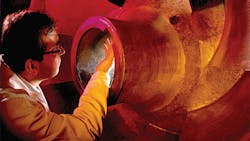Long ago, I did the first serious research to bridge the philosophies of the lean school, which had thought-leaders at the time such as Jim Womack and Masaki Imai, and of learning organizations, with people such as Peter Senge and Daniel Kim. Over time, more people have recognized some of the inherent consistencies between these schools of thought. Peter Senge even called Toyota one of the best examples of a learning organization. But the schools of thought often differ in the realm of application.
Furthermore, within lean, efforts on topics such as standardization and waste elimination are laden with a range of tools, but we suffer from a lack of the right behaviors. The learning organization appears flipped. We talk more about attitudes of being a learner, but under-invest in direct and deliberate actions to make those intentions a reality. It is not necessarily for a lack of tools and methods, but an ad hoc and as-time-allows approach to applying them.
Without making this a course on tools and methods, here are some deliberate actions you can take to make being a learning organization a greater part of your operating system.
1. Experimentation lets us know what really works. Everything is theory until it is properly tested. It doesn’t matter if it is a value proposition as to what customers really want, or a technical solution to an equipment failure. Reality is king. It is said that no business model survives first contact with the customer. That is because the customer is now real, and in testing the theory, it doesn’t always prove to be quite true.
The goal with experimentation is two-fold. First, set up your tests in a deliberate way to learn. Establish your hypothesis, or what you expect to happen, and then study what actually happens and why. Second, make your tests as fast, cheap and risk-free as possible. Don’t open a store; do a pop-up stand. Don’t fabricate something with final welds, but use PVC pipe and Styrofoam board to mock up a design. If instead you launch your final answer, you are likely assuming you are correct instead of entering the activity for learning.
2. Reflection is the broader and perhaps less-focused cousin of experimentation. It is still based on reality, on what actually occurred, but not on testing a specific change. Reflection is a deliberate pause to examine an event, or series of events, to understand what worked, what did not work and, most important, why.
This can be applied to any event from strategic planning to a product launch to a new hire. A popular and useful tool is the U.S. Army’s After Action Review. What’s vital in using these tools is that it results in changes to practice and process, often in the form of new or updated standards. Reflection is not meant to be an academic exercise.
3. Learning objectives allow us to be as deliberate about learning as we are about performance. Think about a well-executed project. The objective of that project provides several benefits: we can plan the work to get there, evaluate success along the way and make appropriate adjustments. How do we treat learning in our projects? Usually they are just an afterthought.
But if we establish clear learning objectives, then we get all the same benefits as the performance objectives. We plan, manage and adjust the work along the way to ensure we meet those learning objectives. They might be collective, such as an entire team learning a specific skill, or individual, such as developing an apprentice in lean.
4. Captured and reused knowledge should be an important aspect of any company’s efforts to sustain and scale performance. Whether you are capturing knowledge of the relationship between two parameters in your product design or establishing the best counterarguments to sales objectives, the benefit of a larger organization is only achieved when the collective knowledge is leveraged. To do this well, you need effective systems to both capture and reuse knowledge.
